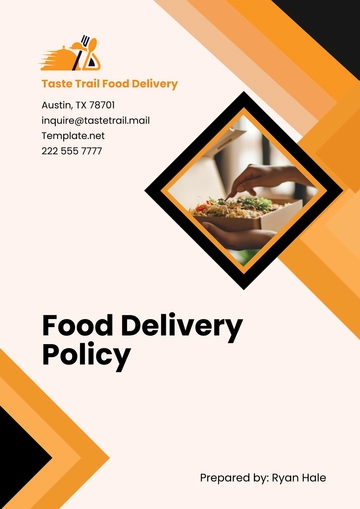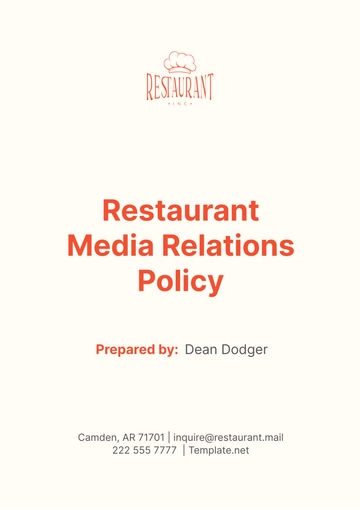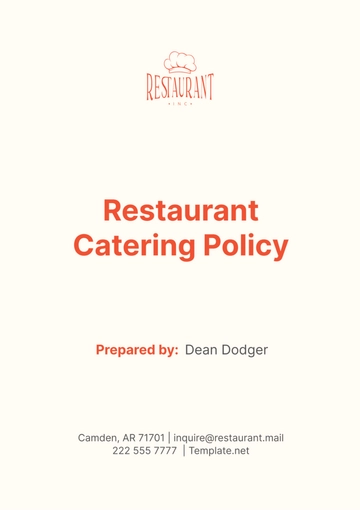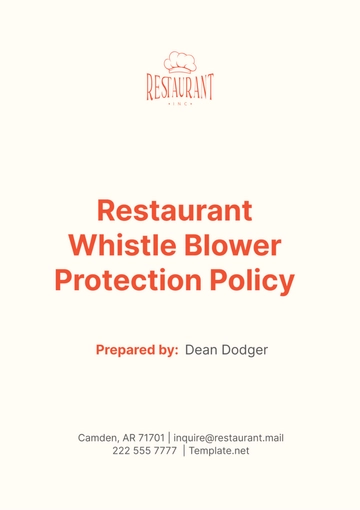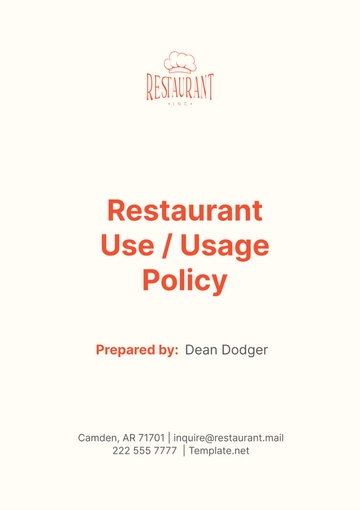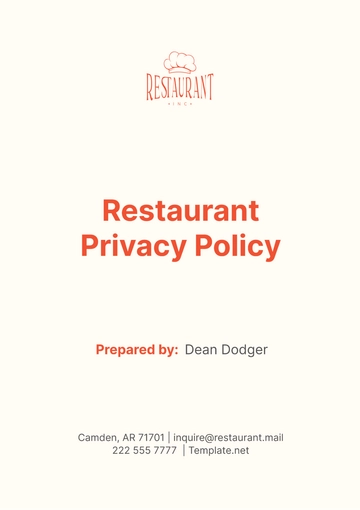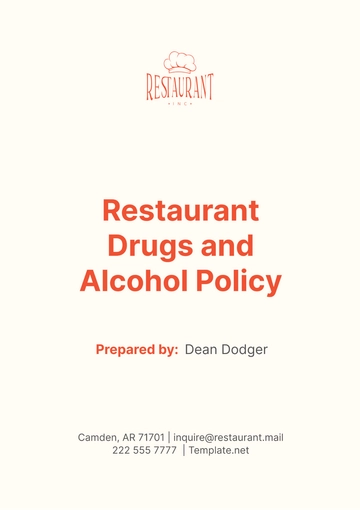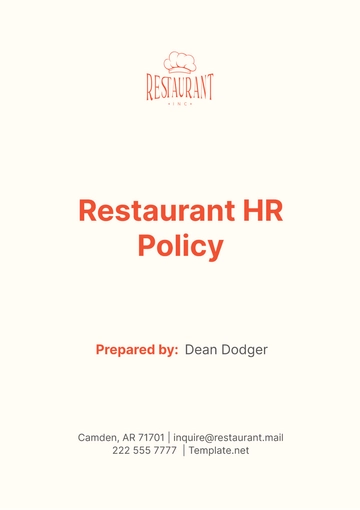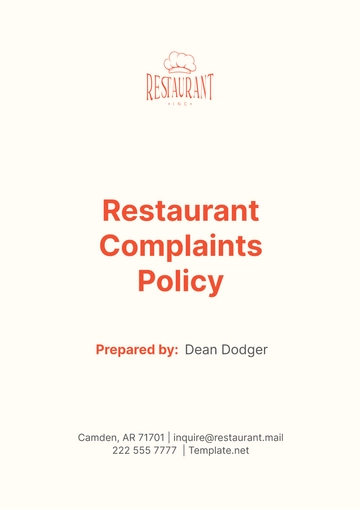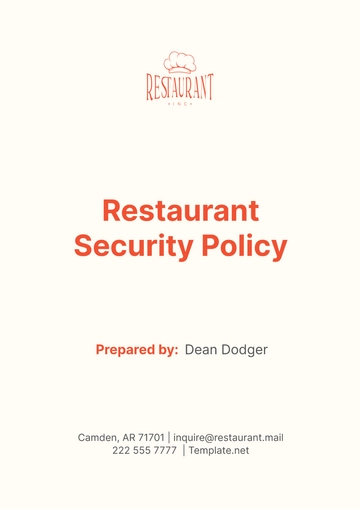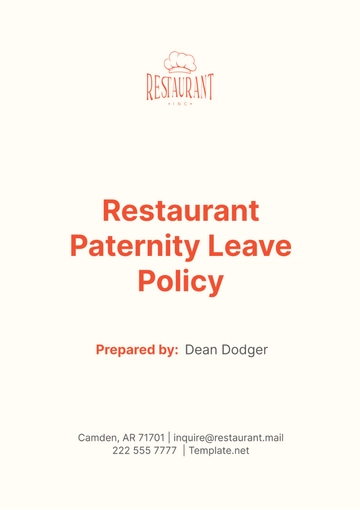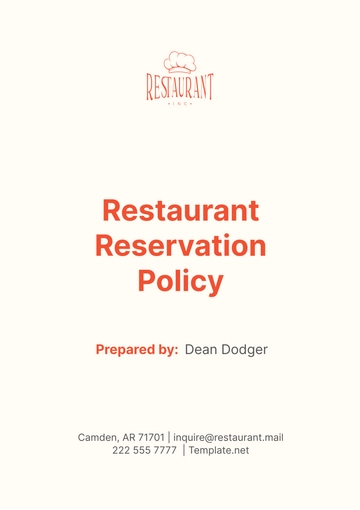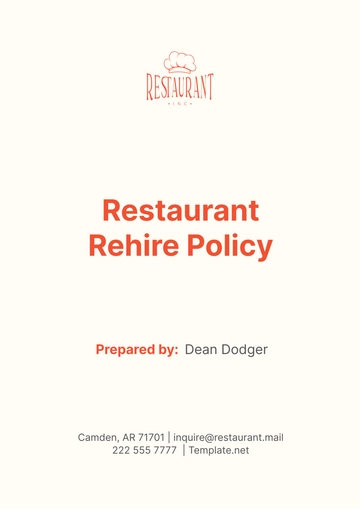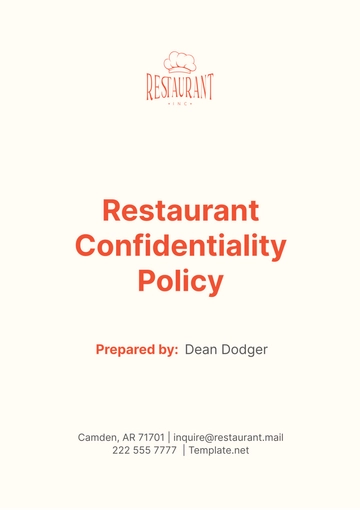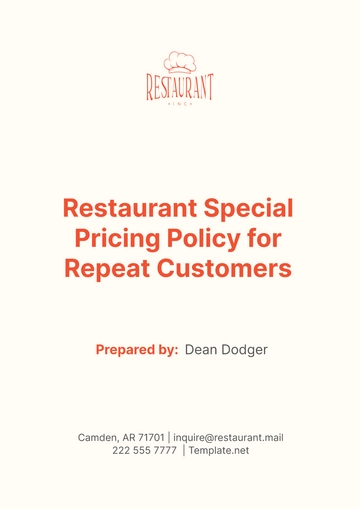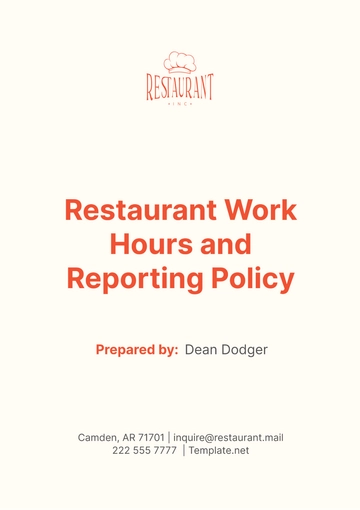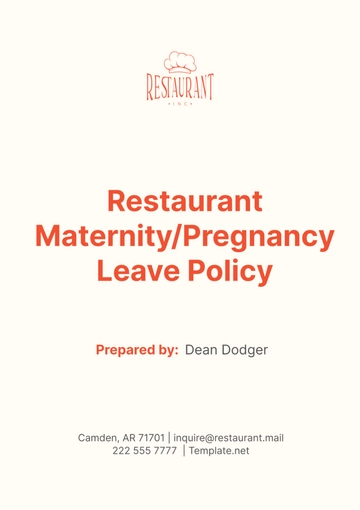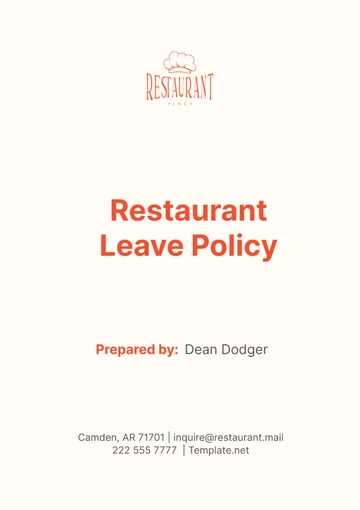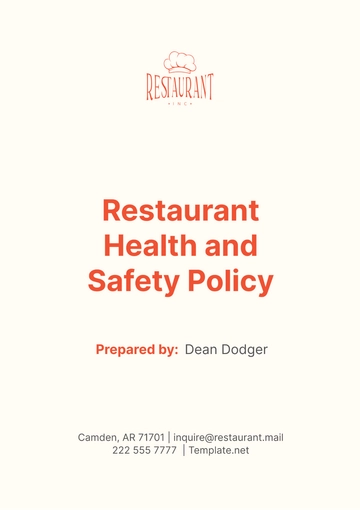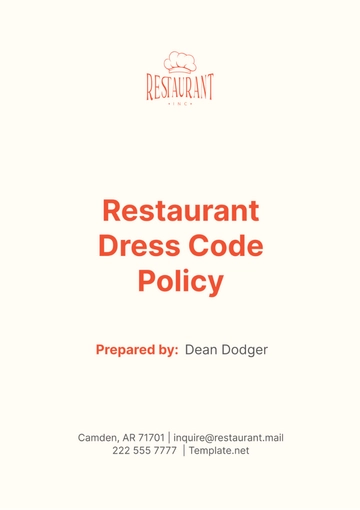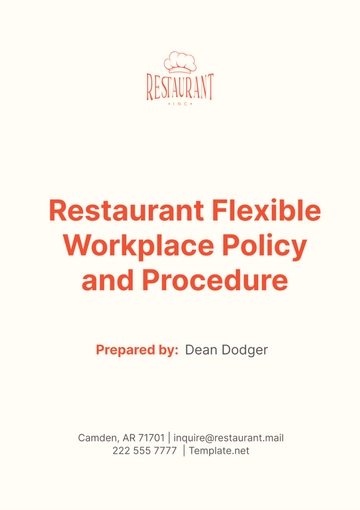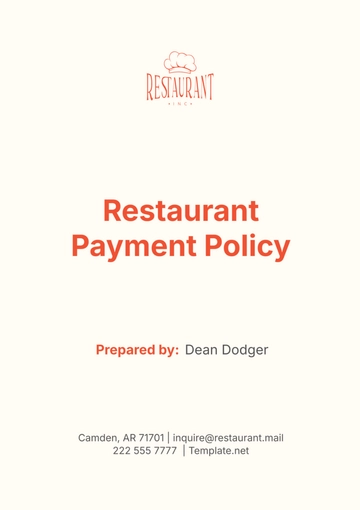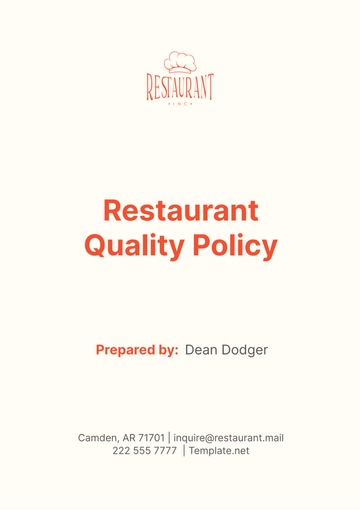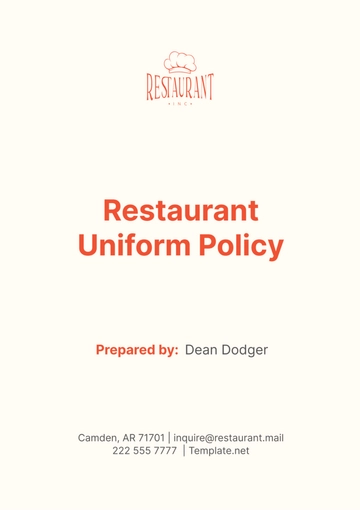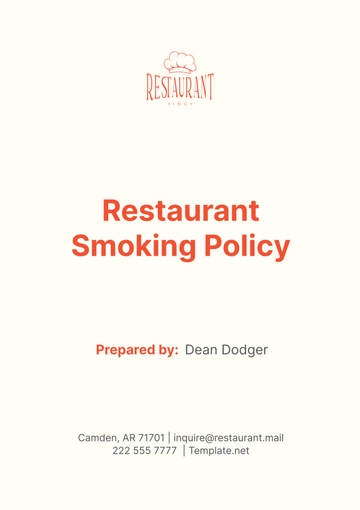Free Restaurant Marketing Policy
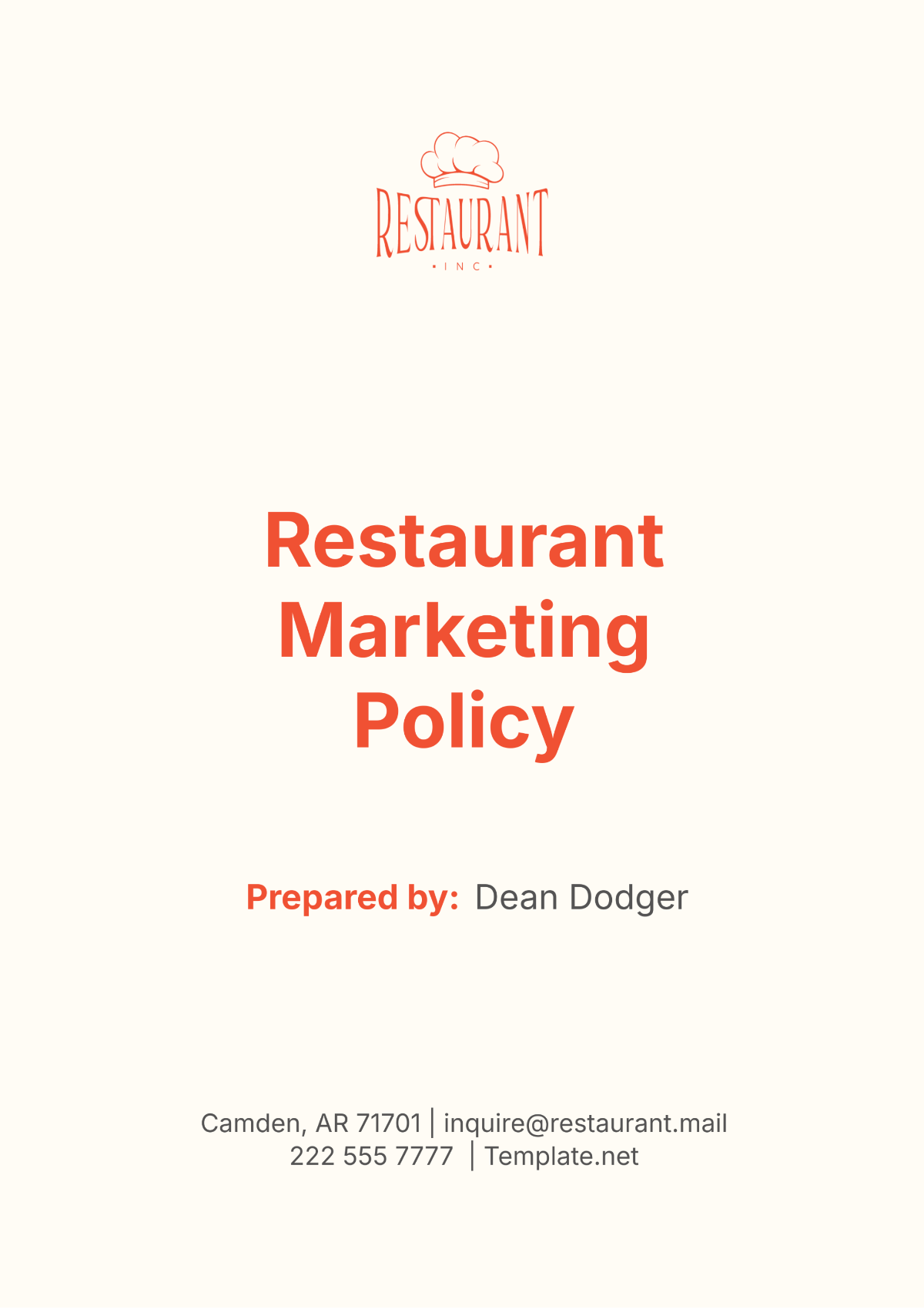
Effective Date: January 1, 2050
1. Purpose
The purpose of this Restaurant Marketing Policy is to establish comprehensive guidelines and best practices for promoting [Your Company Name]. This document aims to ensure a consistent and positive brand image while effectively reaching our target market through diverse and strategic marketing efforts. By adhering to this policy, we aim to achieve sustainable business growth, enhance customer loyalty, and position [Your Company Name] as a preferred dining destination.
2. Scope
This policy applies to all employees involved in marketing activities, including the marketing team, management, and any third-party marketing agencies or consultants hired by the restaurant. It encompasses all forms of marketing communication and promotion, ensuring that every message aligns with our brand values and business objectives.
3. Marketing Objectives
3.1 Increase Brand Awareness
Our primary goal is to increase brand awareness and establish a reputable brand identity. This involves creating a strong, recognizable brand that stands out in a competitive market. We aim to communicate our unique selling propositions and core values to potential customers.
3.2 Attract and Retain Customers
Through targeted marketing campaigns, we aim to attract new customers while retaining existing ones. This includes understanding customer demographics, preferences, and behaviors to tailor our marketing efforts effectively.
3.3 Promote New Menu Items, Special Offers, and Events
Regular promotion of new menu items, special offers, and events is crucial. These promotions should generate excitement and encourage repeat visits. Seasonal menus, limited-time offers, and exclusive events are examples of such initiatives.
3.4 Boost Online Presence and Engagement
In today's digital age, a robust online presence is essential. We aim to enhance our visibility and engagement on social media platforms, our website, and other digital channels. This includes interactive content, customer interactions, and effective use of analytics to measure engagement.
3.5 Enhance Customer Experience and Satisfaction
Improving customer experience and satisfaction is a continuous process. Gathering feedback through reviews and surveys helps us understand customer expectations and areas for improvement, thereby fostering loyalty and positive word-of-mouth.
4. Branding Guidelines
Our brand identity is central to our marketing efforts. All marketing materials should adhere to the following guidelines to ensure consistency and professionalism:
4.1 Use of Logo and Colors
The restaurant's logo and colors should be used consistently across all marketing materials. This creates a cohesive brand image and aids in brand recognition.
4.2 Brand Voice and Messaging
Our brand voice should be clear, consistent, and reflect our values. Whether the tone is formal, casual, or playful, it must align with our brand identity and resonate with our target audience.
4.3 High-Quality Visuals and Graphics
All visuals and graphics used in marketing should be high-quality and reflective of the restaurant's ambiance. Professional photography, well-designed graphics, and cohesive visual elements enhance the overall appeal of our marketing materials.
5. Digital Marketing
5.1 Website
Our website is the cornerstone of our online presence. It should be user-friendly, mobile-responsive, and optimized for search engines (SEO). Regular updates with new content, such as menus, special events, and blog posts, are essential to keep the website current and engaging.
5.2 Social Media
Maintaining an active presence on major social media platforms such as Instagram, Facebook, Twitter, and LinkedIn is crucial. Content should be engaging, visually appealing, and interactive. This includes promotions, customer interactions, behind-the-scenes looks, and user-generated content.
5.3 Email Marketing
Email campaigns will be strategically used to inform customers of upcoming events, special offers, and new menu items. Building and maintaining a growing email list with customer consent is vital. Emails should be personalized and targeted to ensure relevance and engagement.
6. Traditional Marketing
While digital marketing is essential, traditional marketing methods will also play a significant role in our strategy:
6.1 Print Advertisements
Advertising in local newspapers and magazines helps us reach a broader audience. Well-designed print ads can attract attention and drive traffic to our restaurant.
6.2 Flyers and Brochures
Distribution of flyers and brochures in strategic locations can increase visibility and awareness. These materials should be informative and visually appealing.
6.3 Partnerships with Local Businesses
Collaborating with local businesses for co-promotions can be mutually beneficial. This can include joint events, cross-promotional offers, and community involvement initiatives.
7. Events and Promotions
Hosting events and running promotions are key strategies to attract and retain customers. These initiatives should be well-planned and executed to maximize impact:
7.1 Themed Nights and Holiday Specials
Organizing themed nights and holiday specials can draw in customers looking for unique dining experiences. These events should be marketed well in advance to build anticipation.
7.2 Loyalty Programs
Implementing loyalty programs encourages repeat visits and builds customer loyalty. Offering rewards and incentives for frequent diners can enhance customer satisfaction.
7.3 Influencer Partnerships
Partnering with local influencers can amplify our reach and attract new customers. Influencers can provide authentic endorsements and create buzz around our restaurant.
8. Customer Feedback and Reviews
Customer feedback is invaluable for continuous improvement. We will actively encourage reviews on platforms like Yelp, Google, and TripAdvisor. Responding to feedback, both positive and negative, demonstrates our commitment to customer satisfaction and helps us address any issues promptly.
8.1 Encouraging Reviews
Encouraging customers to leave reviews helps build our online reputation. Incentives such as discounts or complimentary items can motivate customers to share their experiences.
8.2 Responding to Feedback
Active engagement with customer feedback shows that we value their opinions. Addressing negative reviews constructively and thanking customers for positive feedback helps build trust and loyalty.
9. Compliance and Review
All marketing activities must comply with relevant advertising laws and ethical standards. This includes truthful advertising, respecting customer privacy, and avoiding deceptive practices. This policy will be reviewed annually and updated as needed to ensure its effectiveness and compliance with current regulations.
9.1 Advertising Laws and Ethics
Compliance with advertising laws and ethical standards is paramount. All marketing communications should be honest, non-misleading, and respectful of customer privacy.
9.2 Annual Review and Updates
An annual review of this policy will be conducted to assess its effectiveness and make necessary updates. This ensures that our marketing strategies remain current and aligned with our business goals.
Contact Information
If you have any questions or need further information, please contact us at:
[Your Company Name]
Email: [Your Company Email]
Phone: [Your Company Number]
Address: [Your Company Address]
We look forward to working together to make our restaurant a preferred dining destination.
Effective Dates and Review
Effective Date: January 1, 2050
Next Review Date: January 1, 2051
By adhering to this comprehensive Restaurant Marketing Policy, [Your Company Name] will ensure that all marketing efforts are aligned with our brand values, business objectives, and legal requirements. This strategic approach will help us build a strong, reputable brand that attracts and retains customers, driving long-term business success.
- 100% Customizable, free editor
- Access 1 Million+ Templates, photo’s & graphics
- Download or share as a template
- Click and replace photos, graphics, text, backgrounds
- Resize, crop, AI write & more
- Access advanced editor
Attract hungry diners and boost profits with Template.net's Restaurant Marketing Policy Template. This editable marvel empowers restaurateurs to create winning marketing strategies tailored to their unique brand. With our AI editor tool, customization is a breeze, ensuring seamless integration with your restaurant's vision. Maximize visibility and drive foot traffic with this essential resource. Start crafting your success story today!
You may also like
- HR Policy
- Restaurant Policy
- Company Policy
- Accounting Policies and Procedures
- Website Policy
- Privacy Policy
- Safety Policy
- School Policy
- IT and Software Policy
- Law Firm Policy
- Construction Policy
- Interior Design Policy
- Travel Agency Policy
- Education Academic Policy
- Security Policy
- Real Estate Policy
- Expense Policy
- Software Policy
